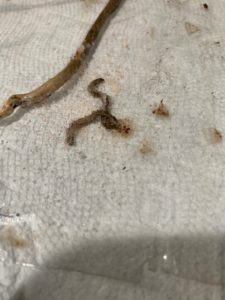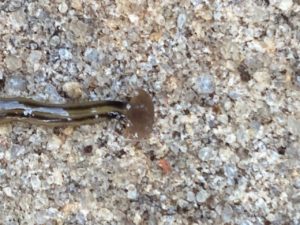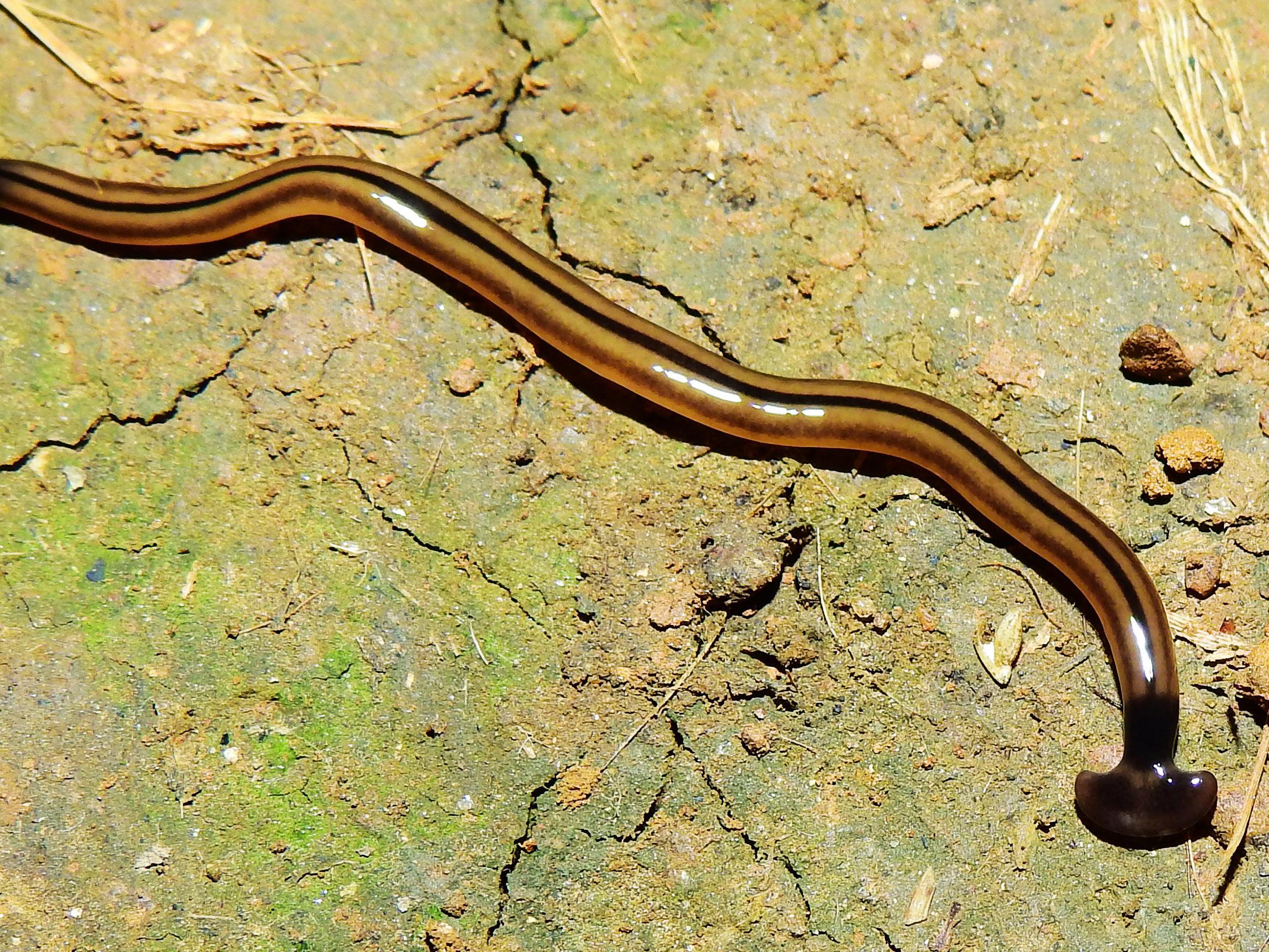Wright Center Master Gardeners have been learning a lot about a “new” worm that crawled out from under a rock. The Hammerhead or Flathead Worm is a shiny, slimy, sticky worm that is a predator for common earthworms according to the Texas State University System, Invasive Species website. Introduced into the U.S. from China in the early 1900s, the Flathead is now found in most states. A favorite specimen in biology classes because it can be dissected, and both parts of the worm will regenerate.

Flathead after being salted – his head shrinks down to same size as his body after salt is applied. Green twig to the worm’s left shows evidence of having been partially consumed.

Prior to capture.
We found our first Flathead worm about a month ago under an overturned bird bath. It was a curiosity. I wanted to know more and checked the internet until I found the information from Texas State University. There is not a lot of solid research data available. The general consensus is that the worm is a nuisance at a minimum, and may be a harm in perfect climate conditions. Wright Center is a lot like Southeast Texas.
It wasn’t long until we found a second Flathead. As an experiment we placed it in a ziplock bag without air or water. It was very active in the bag for several days and died on day three. Several days later another worm appeared and we captured him, put him in a bag and added water, a green twig and air. He lived for well over a week: suctioned nutrients from the twig, consumed the water and pooped frequently. Earlier this week he died when I opened the bag and sprinkled salt on the worm, as recommended by Texas Invasive Species. Instantly, he shriveled! Today we found yet another worm on the concrete driveway. I had bought a box of salt to keep at Wright, so we took care of this fellow in a matter of minutes.
Our approach going forward is to be alert for more Flathead worms and keep the salt shaker handy. Earthworms are more important to us than this invasive critter.

